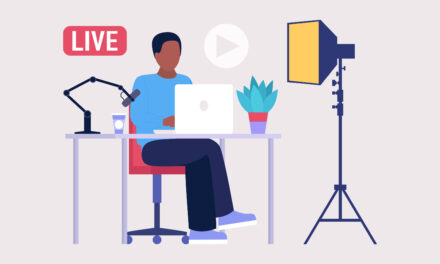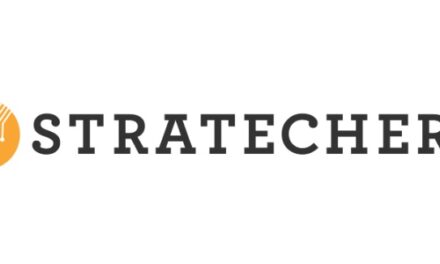Paying to promote your content and content business on social media platforms can expand your reach or encourage existing audiences to do more. But you don’t need to pay to promote posts and advertise everywhere. In fact, you really shouldn’t.
Pick the one objective that best fits your business goals and stage.
For example, a relatively new content entrepreneur might publish ads to generate brand awareness, while someone with a little more experience might seek to increase web traffic. Entrepreneurs whose primary objective revolves around sales might opt to capture leads or drive sales.
Choose one primary objective – that clearly defined campaign goal will set your ads up for success. Some platforms specifically ask for the objective (selecting from a standard list) so they can better deliver what you want from the ads.
With the business goal in mind, you are ready to pick the social media platform on which to advertise. I don’t recommend spreading your available budget across multiple platforms. Focus on a single platform. That requires knowing where your target audience is and what content they expect to find on that platform.
For example, a potential audience member could be on Instagram and LinkedIn. They like Instagram to post images from their daily lives and prefer LinkedIn to grow their business acumen. If your content tilt is hobby-related, Instagram might be the better option. But if it’s related to their profession, LinkedIn would be the right pick.
LinkedIn advertising
Before you pay to advertise on LinkedIn, ensure you’ve maximized your free presence – personal profile, business page, regular posting, and possibly a newsletter. All that helps your paid advertising work better because potential audience members can easily check and see that you’re legit.
Audience: Since LinkedIn is a platform for people in business, you can segment your target audience by job title, company size and industry, skills and experience, education, or location. You also can target people outside the platform with the LinkedIn Audience Network.
Formats: LinkedIn sells multiple ad formats based on objective and audience. Among the most popular:
- Sponsored content – Similar to organic posts, these images, videos, or carousel content appear in the audience’s feeds. These can work well to promote your content and grow awareness of your brand.
- Direct message ads – You can send personalized messages directly to individuals. These work better when the recipient knows your brand and purpose.
- Text ads – A more affordable option, these ads appear adjacent to organic search results. They simply identify your company name, a headline, and a description.
- Dynamic ads – More personalized but less direct ads showcase your content products based on the target audience member’s profile, web activity, and other data identified by LinkedIn.
Budget and metrics: Like most platforms, LinkedIn asks for your budget. You can set it per click or acquisition. It allows you to establish daily or lifetime budgets with specific start and end dates for the campaign. LinkedIn’s metrics track impressions, clicks, conversions, and cost per click.
Get started: Log into your LinkedIn account, click the Business icon at the top, then pick the Advertise option. You’ll need to set up a campaign manager account if you haven’t yet. And remember, create multiple ads within the same campaign to attract your audience and understand which helps you achieve your objective the best.
Helpful Resources for Advertising on LinkedIn:
- LinkedIn Ads for Beginners
- A Complete Guide to Making the Most of LinkedIn Advertising
- How to Advertise on LinkedIn in 6 Simple Steps
Facebook and Instagram advertising
Meta sets up its advertising so you can promote on either or both social platforms, Facebook and Instagram.
Audience: Meta provides a laundry list of target audience options, from the usual demographics and interests to their online behavior and life events. You also can target people who have visited your website or interacted with you through your Facebook Page or Instagram account.
Plus, you can pick lookalike audiences – people similar to your customers or website visitors and connections – friends of people who liked your page or interacted with your business.
Format: Meta offers a long list of ad formats. You’re likely familiar with the image ads. They could be a single, static image showcasing your brand or content product or a carousel of up to 10 images or videos linked to landing pages. In the video realm, you can pick from in-feed videos, Stories and Reels ads, live videos to connect in real time, and video polls.
You also can buy ads to be sent to individuals through Messenger, playable ads to let users interact with games directly in the ad, and lead ads to capture audience contact information with gated content.
Budget and metrics: Meta also uses a bidding model for advertising. You set the budget for each ad set. It also requires you to select manual or automated bidding. Manual requires setting a maximum price per click or impression. Automated bidding allows Meta to optimize your bids based on your campaign goals. Meta also lets you pick daily and/or lifetime maximums. You can optimize your ad budget for reach, impressions, clicks, or conversions.
Get started: To connect your account to Meta Business Suite, visit this page and click Get Started in the upper right. You will need to link your existing Facebook page or Instagram profile to this account.
Helpful Resources for Advertising on Facebook and Instagram:
Don’t stop with just one campaign
Advertising on social media platforms isn’t a simple puzzle. After you publish your first campaign on the platform and give it time to catch on, monitor the analytics closely. What’s working? What’s doing poorly? Does one message, image, or video resonate better than others? Adjust your investment to do more of that. By analyzing and adjusting your ad program regularly, you will better position your advertising to deliver what will attract the audience you seek and get them to do what you want.
Interested in search advertising? The Tilt’s Primer on Google Ads
About the author
Ann regularly combines words and strategy for B2B, B2C, and nonprofits, continuing to live up to her high school nickname, Editor Ann. An IABC Communicator of the Year and founder of G Force Communication, Ann coaches and trains professionals in all things content. Connect with her on LinkedIn and Twitter.










